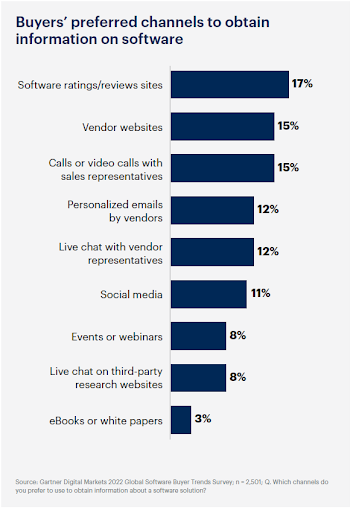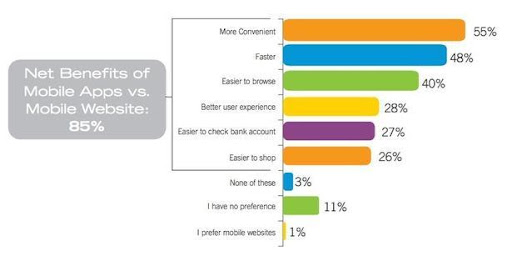Aaron Wittersheim
Aaron Wittersheim is Chief Operating Officer at Straight North. He has helped startups, middle-market firms, and Fortune 500 companies improve organizational structure and grow through his expertise.
Enter the lucrative mobile app market: avoid mistakes, stay competitive, and boost sales with effective strategies and trends. This blog is your perfect stop for it!
Mobile apps are highly lucrative sources of revenue for numerous companies across the globe, from social media platforms to video game developers. With revenues expected to surpass $600 billion by 2025, businesses should attempt to enter the industry as soon as possible to remain competitive.
While there are several avenues for success within this market, companies that enter without a plan can lose out on potentially profitable opportunities. You should avoid the 13 mobile app marketing mistakes to prepare your business for this competitive field.
Launching a new app is both an exciting and vital process for companies. However, if you implement an effective marketing plan alongside it, an app will eventually retain traction after launch.
New apps are being developed for mobile app stores every day, meaning that apps without a concrete plan will eventually end up overshadowed by new releases that resonate better with audiences.
One method of marketing an app is by rewarding users for writing reviews. Customers will often inspect the review section for an app if they are unsure of its quality (especially if the app is not free), so encouraging customers to write about their experience with an app can help them determine whether it satisfies their needs.

Businesses can also incentivize customers to promote their apps by offering exclusive content to users who post on social media. Gifting ad-free content or in-game currency to customers who use specific hashtags in their posts can boost exposure and encourage your target audience to keep using your app.
App development can be costly for companies, and developing an app without any monetization structure is one of the most expensive mobile app marketing mistakes a company can make. Before releasing your app, you should determine your strategy for generating revenue.
Multiple approaches to in-app monetization offer specific strengths and weaknesses depending on the intended experience. Some apps use digital currencies that can be given to players as a reward for loyalty or engagement, while others can offer an ad-free experience in exchange for viewing a certain amount of marketing content.
Banners and promotional images rarely disrupt a consumer’s experience but also create visual clutter. Skippable videos that reward users for choosing to watch reinforce the engagement of a brand’s most loyal customers while granting casual users the freedom to have an uninterrupted experience.

Successful mobile apps often experience numerous changes after their launch. Some apps receive new features and content, while others finetune their user experience to ensure it is as comfortable as possible.
Plenty of necessary changes will not become apparent until customers have had a chance to use the app, creating a need for money further down the road. Budgeting for improvements is essential for the success of a new app.
If the app fails to adjust to modern standards, customers will eventually perceive it outdated because technology constantly changes. This reflects on the company running the app, potentially implying they lack the resources to maintain an up-to-date app.
Accounting for improvements when determining a monetization plan can help ensure long-term viability for an app. Optimizing an app can improve your target audience’s experience while retaining their interest.
Just as marketing to computer users requires specific strategies, marketing to mobile users also demands attention and customized adjustments. Apps that are effectively clickable links to websites could lead customers to believe a company is not prepared to support multiple online platforms.
These types of apps also risk communicating to customers that a company does not fully understand the mobile experience or that they cannot afford to address it adequately.
Building an app specifically for mobile devices makes it easier for mobile customers to engage with your business. It demonstrates that a company is adaptable and concerned with providing a comfortable user experience regardless of someone’s platform.
While designing the perfect app might sound like a pleasant idea for a company, the reality is that this is a long and expensive process. One way businesses can cut the cost of development is by using a cross-platform programming language.
This can enable a company to focus on one main app while also being able to make adjustments across different platforms.

One of the most accessible mobile app marketing mistakes a company can make is focusing too much on emulating a website’s desktop design while developing a mobile app. While a phone is technically a small computer, there are vast distinctions between mobile and desktop shopping experiences.
You need to accommodate the customer experience difference between mobile and computer users. Where desktop designs are excellent at presenting large amounts of information within a set space, mobile designs prioritize clarity and ease of navigation.
Should a company attempt to convert its website to an app without proper adjustments, the resulting app could suffer from too many clusters of information.
Rather than using an existing website as a guide for the mobile experience, companies can look towards other successful mobile apps designed specifically for the phone. The mobile experience should be smooth, visually clear, and easy for customers to navigate.

Every business wishes to create a high-quality, successful app, but even the most optimized app can face issues gaining traction without app store optimization (ASO).
Similar to how search engine optimization helps determine which results appear first in a web search, ASO determines the visibility of apps within an app store.
Companies that do not prioritize their app’s ASO can cause it to fall behind the competition in search results or even appear in searches where it does not belong.
Resolving this issue requires understanding how each app store determines search results. By optimizing an app’s content within an app store, consumers will have an easier time discovering your app.

Optimizing your app is important for improving your target audience’s experience, but mobile app marketing mistakes such as releasing scarce or inconsistent content will rarely lead to the best results.
Regular updates are an excellent way to ensure your app remains high quality while demonstrating professionalism and commitment to your audience.
Rather than releasing substantial updates months apart, companies should consistently release smaller updates to ease users into changes. This style of improvement leaves room for flexibility and redirection without overwhelming consumers.
Social media is one of the most influential and inexpensive forms of mobile app marketing available to businesses. According to research, 4.72 billion people are currently using social media. These platforms are a rich source of potential customers and business opportunities.
Whether companies are purchasing ad space, forming deals with influencers to advertise their products, or incentivizing their customers to form their own promotional posts, there are numerous ways to promote your mobile app.
Apps that do not take advantage of social media could encounter difficulties while attempting to reach their target market, not to mention that their competitors could be utilizing multiple social media platforms simultaneously.
Rewarding followers for linking their social media accounts and posting about the app can help increase exposure and user engagement. Companies can sometimes even implement current trends and online challenges into their apps.
This marketing style communicates that a company is listening to consumers and paying attention to what their audience cares about.
Videos are incredibly effective at retaining a customer’s interest compared to pictures. Only using image advertisements and infrequently releasing video ads are mobile app marketing mistakes that result in companies struggling to reach their target audience.
Underutilizing video ads lead to consumers failing to understand how an app functions. Pictures do not accurately capture the user experience of an app, as most mobile apps use motions and animations that pictures cannot convey.
On the other hand, videos are perfect for communicating this information to audiences. Not only are videos excellent for displaying how an app operates, but they can also optimize their length for specific platforms. Longer videos can be split into multiple parts, creating more content.
When consumers encounter an issue while using an app, the time it takes to resolve their problem will significantly affect their overall experience. Businesses should ensure their customers have the communication channels for voicing their concerns.
Without proper communication channels, customers could feel lost during their app experience. Channels such as a contact section or email directory can help customers resolve their problems.
Lacking a communication channel can also drive customers to voice their frustrations in the review section of the app store. Given the critical user reviews, this response can deter potential customers from downloading your app.

Regarding online shopping, consumers are highly interested in learning what others think of a particular product. A survey featuring over 6,500 U.S. shoppers found that 79% of consumers explicitly seek out websites with product reviews.
Customers value the experience of their peers, which is why businesses need to monitor their app store reviews. Businesses should ensure they never ignore the app store reviews for their apps. Not only do reviews provide essential feedback for your app, but they also serve as a customer’s way of determining the quality of an app.
A review section filled with unanswered questions and problems can discourage customers from downloading an app. Responding to reviews can help satisfy existing customers while attracting new ones.
By resolving a customer’s problem and leaving a professional response to their review following the change, a company can communicate to its audience that they are determined to improve and listen to customer feedback.
A highly polished app demonstrates professionalism and quality, but without a reason for customers to return, businesses will struggle to retain a user base.
Mobile app marketing mistakes such as overpromising or marketing to an unnecessarily broad audience can lead to consumers deleting an app as quickly as they downloaded it. Businesses should consider the concerns and desires of their target audience to retain a consistent user count.
In-app rewards are an excellent way of making users feel appreciated and encouraged to continue using your app. Log-in bonuses, loyalty rewards, and limited-time offers are excellent ways of encouraging your audience to use your app consistently.
The mobile app market is as competitive as it is lucrative. For businesses to achieve sustainable growth and success within this industry, they need to enter with the willingness to invest significant resources and make changes when necessary.
If you fail to plan out an app properly, customers will quickly notice, and it will ultimately reflect on the brand. Companies that determine their goals and expectations before entering the market are better prepared to adapt to challenges and changes.
When companies join the mobile app market without understanding their desired outcome, they can lose significant money before realizing their errors. Preparation and flexibility are essential for companies starting their mobile app campaign, as they grant guidance and help prevent businesses from making mobile app marketing mistakes.
The mobile app market is incredibly profitable and does not appear to be slowing in growth any time soon. Still, careful consideration and planning are essential for businesses hoping to succeed within this industry.
As technology continues to influence marketing year-to-year, staying up to date with all the latest app marketing trends can help you keep your brand relevant and competitive.
With proper commitment, resources, and adjustments, any business should be able to optimize its app to satisfy its target audience and improve sales.
You’ll also receive some of our best posts today

Aaron Wittersheim is Chief Operating Officer at Straight North. He has helped startups, middle-market firms, and Fortune 500 companies improve organizational structure and grow through his expertise.
Every business owner tries their hardest to establish a...
Evolving technologies offer exciting insights from data to digital...
Remember those classes in college or university where you...

User reviews are a game-changer for e-commerce. Consumers rely heavily o...
Don’t miss the new articles!